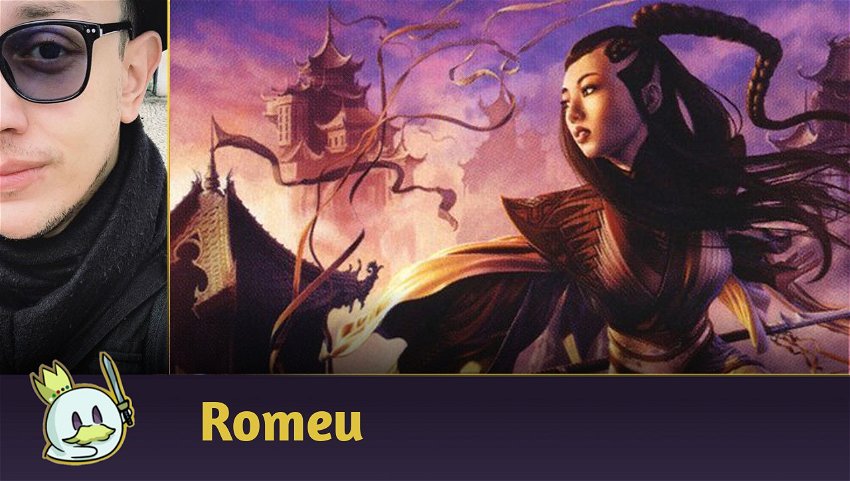This last year has been a long and very interesting one for the trajectory of Magic: The Gathering as a game, and we at Cards Realm have started our retrospectives, where we remember important moments of Magic this year and also evaluate the impact that 2022 will leave for the competitive formats.
Today, we're going to evaluate the ten most impactful cards released this year for Pauper!
10 - Energy Refractor

In early 2022, Bonder's Ornament, an artifact that created an asymmetrical card advantage effect and guaranteed manafixing, was banned to reduce Tron's dominance and diversify the means of obtaining value during a game. But it wasn't the only artifact removed from Pauper in that announcement: unexpectedly, Prophetic Prism also left the format.
Ad
Since then, Tron had a hard time in returning to the competitive Metagame and achieving good results, but Energy Refractor, released in The Brothers' War, brought the archetype back into the format's spotlight, including a win at the Pauper Challenge.
However, as it does not perform an equivalent 1-for-1 mana filtering, the new artifact has its limited space in other decks, in addition to not giving Tron as much freedom to make their most absurd plays in the first turns, opening up space to — in a faster Pauper than the one where it was the apex predator — other decks to rush Tron based on aggressiveness or Tempo.
In a world where Prophetic Prism was too strong to facilitate color diversity without offering any downsides in return, Energy Refractor operates as an efficient replacement that, thus far, has not proven too strong to place Tron where it had been for years.
9 - Kenku Artificer

Since the Bridges came out in Modern Horizons II, interactions with Cleansing Wildfire have become a common habit in the format for archetypes like Jund Cascade and Jeskai Ephemerate, but there weren't any other ways to get even more out of one of the most controversial lands cycle that ever existed for Pauper.
Kenku Artificer is an interesting take on animating artifacts, previously seen on uncommon and rare cards like Ensoul Artifact and Rise and Shine. But the creature from Commander Legends: Battle for Baldur's Gate has the benefit of its ability being an ETB effect and the artifact not losing its creature type if it leaves play, allowing it to be played alongside Ephemerate to turn the Bridges into Birdges, a small army of creatures with Flying and indestructible.
Unfortunately, Jeskai Ephemerate isn't a frequently trending strategy on Pauper today, and not every list is keen on resorting to this iteration, limiting Kenku Artificer's space in the format, despite its occasional appearances in Grixis Affinity.
8 - Moon-Circuit Hacker

Kamigawa: Neon Dynasty was the best 2022 set for Magic, and this is also reflected in Pauper. So, you'll see many cards from this set on the list, starting with Moon-Circuit Hacker which, in the end, ended up not living up to the expectations of the hype created around it.
Pauper players expected some interesting Ninja to return in Kamigawa, including some speculations on a Ninja of the Deep Hours reprint. But the design team went a step further and graced the format with yet another variant in this category: Moon-Circuit Hacker did half as much as the most famous version for half the cost.
Many thought that its inclusion in the format would only push Faeries even further to the top of the Metagame, but the reality is that these archetypes were gradually moving towards Midrange and the new Ninja is essentially a Tempo card. Therefore, despite its use with variations in the first post-release weeks, where the creature really established itself and collaborated for the growth of a deck in the format was in Mono Blue Faeries, where it is present as of today.
Ad
7 - Reckoner's Bargain

In many ways, Reckoner's Bargain is nothing more than copies 5-8 of Deadly Dispute, but its Lifegain bonus has become more relevant as Pauper evolved throughout 2022, with more aggressive strategies like Mono Red Aggro gaining new pieces, in addition to the creation and refinement of decks like Kuldotha Burn and Rakdos Madness.
Today, Kamigawa: Neon Dynasty's instant is essential for Affinity to have the means to postpone the initial aggressiveness of these decks while accumulating card advantage and looking for more efficient answers, such as Krark-Clan Shaman. Additionally, with eight black "draw 2" effects with some extra value, Rakdos Affinity variants have become more consistent and are now part of the competitive scene.
6 - The Modern Age

One of the first common sagas released in the game, The Modern Age is a complete card: it filters your hand, offers extra draws, can be reused with Kor Skyfisher and gives you a 2/3 body with Flying at the end of its utility cycle.
This enchantment soon became a staple, with tests and variations being used in several strategies, while helping to revitalize some forgotten archetypes, such as Tireless Tribe, as well as reinforcing lists that seek to take advantage of effects like Flashback or Embalm.
Today, The Modern Age is an important part of one of the main competitive decks, Caw-Gates, where it does a little bit of everything its strategy proposes and still has the bonus of being another flying creature to pump with Basilisk Gate.
5 - Tolarian Terror

Being by far the most promising card in Dominaria United, Tolarian Terror is basically the Murktide Regent that Pauper has at home. It can be played in blue shells, requires the same kind of investment as Delve but without the need to exile cards from the graveyard, and offers a fast clock which protects itself.
It took only a few weeks for, alongside the then-forgotten Gurmag Angler, Tolarian Terror to revitalize the Dimir Tempo shell that once held Delver of Secrets, creating Dimir Terror, which seeks to use spells like Consider and Thought Scour to speed up the casting of two large creatures while controlling the game's pacing through cheap counterspells and removals.
Tolarian Terror is such a useful and powerful creature within the best color possible for a shell that cares about spells that it also reinforced Izzet Serpentine, as well as establishing a Mono Blue variant of its own strategy, where it has a multitude of cheap spells and threats, such as Delver of Secrets and Spire Golem.
4 - The Initiative

Many of the cards mentioned so far made changes for Pauper and leveraged strategies that were on the wane last year, but none of them went as far as twisting the competitive Metagame like the Initiative did.
Ad
Initially considered similar to Monarch in that it was a game state caused by a permanent entering the battlefield or a creature dealing combat damage, Initiative soon proved to be much more potent than the Conspiracy: Take the Crown mechanic in terms of dominating the game and even winning the match on their own.

Soon, players quickly discovered that casting threats that put The Undercity in play would ensure the rest of the match flowed smoothly if your opponent couldn't take the Initiative from you and hold it for many turns, giving room for Turbo Initiative , which ran accelerators like Dark Ritual and Lotus Petal to cast Vicious Battlerager or Underdark Explorer as early as turn 1.
This strategy soon took over Pauper, and as a result, all pieces that guaranteed good board position and/or were easily splashable and cast too soon with Rituals were banned, keeping only those creatures that cost more than four mana and required color combinations that did not participate in Turbo Initiative, such as Avenging Hunter and Goliath Paladin.

However, both are still played in Pauper today in archetypes like Naya Ephemerate, despite not providing the same impact and irreversible game state that existed with the other banned creatures.
3 - Monastery Swiftspear

If a player in 2017 came from the future and said that in 2022 we would have Monastery Swiftspear in Pauper, we would laugh in their face.
It's fascinating to realize that Magic's power creep got to the point where, in a Master Set, Monastery Swiftspear was in an acceptable Draft pattern to become a common and, consequently, would go into Pauper, causing significant changes with its presence.
Today, it is possible to state that red is one of the best or the best color available for the format after years of blue's predominance, and part of this is mainly due to Swiftspear, which opened up new opportunities for deckbuilding and interaction in this color while establishing one of the fastest early game clocks the format has ever had in its history.
From Mono Red Burn, through Kuldotha Red, and even Boros Synthesizer, Monastery Swiftspear has significantly altered the pace at which decks can now play under the greedier strategies, and its arrival in the format has also helped to improve some of Affinity's natural predators to the point of reducing part of its dominance in the format.
2 - Basilisk Gate

The Gates cycle are basically variations of the Thriving Lands released in JumpStart. However, its space in Pauper became much more prevalent due to the presence of a card that motivated players to use these lands in several archetypes — Basilisk Gate.
Although initially underestimated due to the setup required for its use, it didn't take long for Pauper to learn that Basilisk Gate has the potential to turn any creature into a threat, even more so if they have some kind of evasion like Flying, or abilities that benefits from combat, like Lifelink.
Ad
For a long time, various lists sought to resort to Basilisk Gate, even Izzet Faeries tried to run it for some time. However, the strategies where the land really succeeded were in Boros Bully and mainly in the archetype that became known as Caw-Gate, an Azorius deck with splashes for other colors thanks to the Gates' flexibility, and that resorts to Squadron Hawk and Brainstorm to create shuffle interactions and find the necessary parts at the right timing.
Caw-Gate is one of Pauper's main competitors today, and the only new deck this year to be in that position. Its idea is innovative and brought players a shell that already existed in the format, but with the necessary push to make it a force to be reckoned with in the competitive world.
1 - Experimental Synthesizer

In a year that saw so many changes and impactful news in Pauper, choosing the main card of the year was an arduous task, especially since all slots from the Top 3 easily occupy the first position. However, it was Experimental Synthesizer that started the change of pace and made Pauper faster as new iterations emerged.
Functioning basically as a pseudo-Reckless Impulse on a cheap artifact, Experimental Synthesizer was initially played in the slots that previously belonged to Prophetic Prism in the Boros shell, which gave it a better aggressive stance along with Seeker of the Way. But as the months went by, we started to see it in more decks, to the point where it is now one of the main value engines of the format.
One of Pauper's top decks today is Kuldotha Red, and it wouldn't exist if Experimental Synthesizer didn't come out in Kamigawa: Neon Dynasty. Boros would still have serious problems playing under if it wasn't for this artifact, and several other archetypes that make or made use of it at some point would not have their space in the format without its existence and perhaps would still be preyed upon by slower strategies.
So, for pioneering this year's run of cards that significantly changed the pace and interactions required to compete in Pauper today, Experimental Synthesizer deserves its spot as the most important card of 2022 for the format!
Conclusion
That's all for today.
Pauper is constantly changing, and it looks like 2023 will bring even more new additions to the format. Particularly, the set that intrigues me the most in this regard will be Lord of the Rings: Tales of Middle-Earth, especially since comparisons are not rare between it and Modern Horizons I and II, which completely changed the format when they were released.
Thanks for reading!








— commentaires0
Soyez le premier à commenter